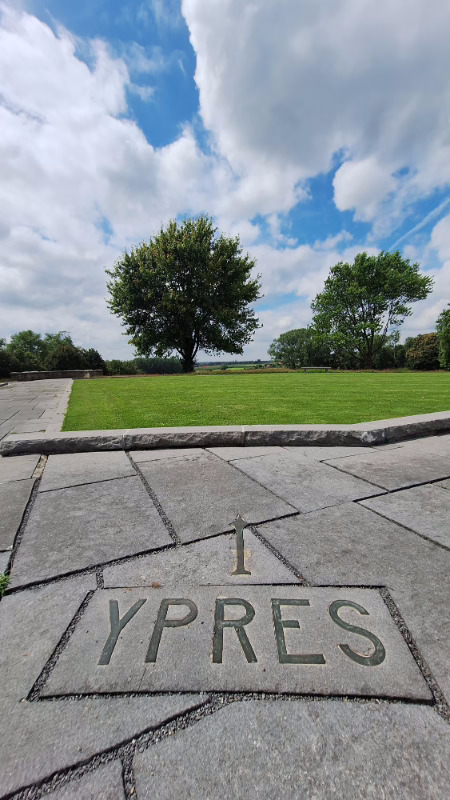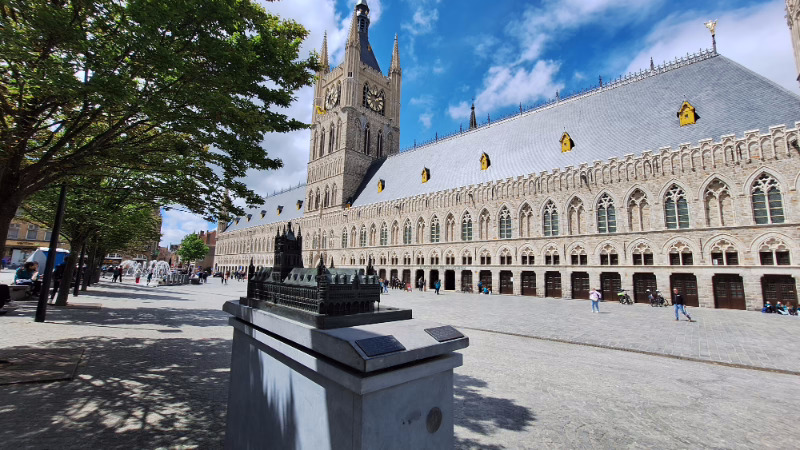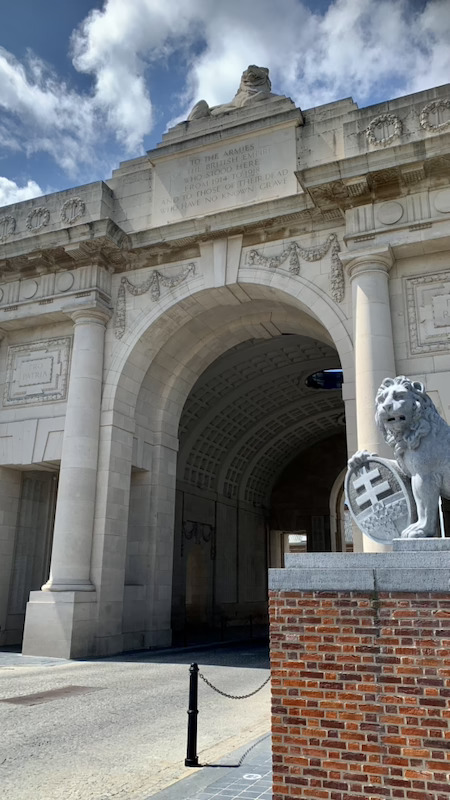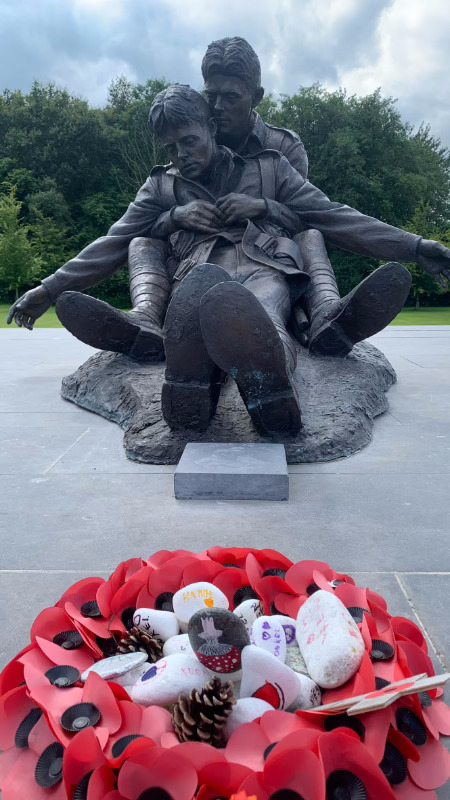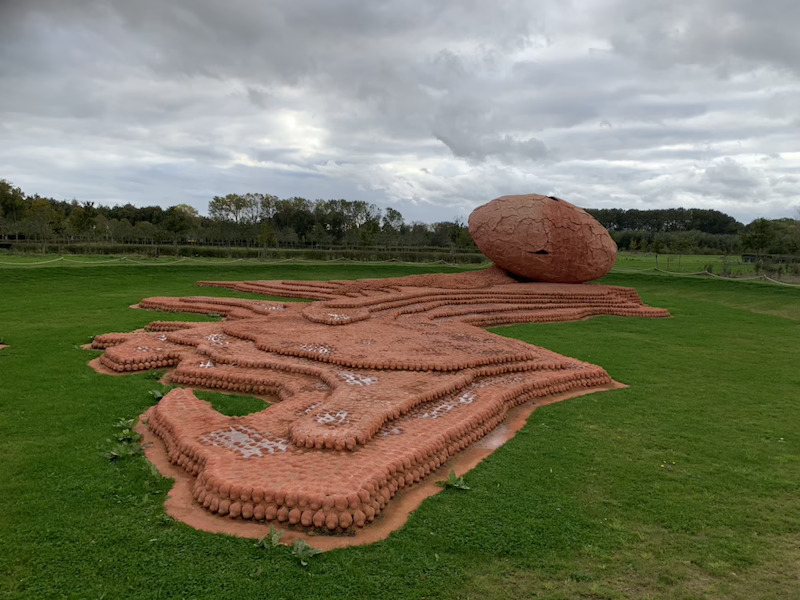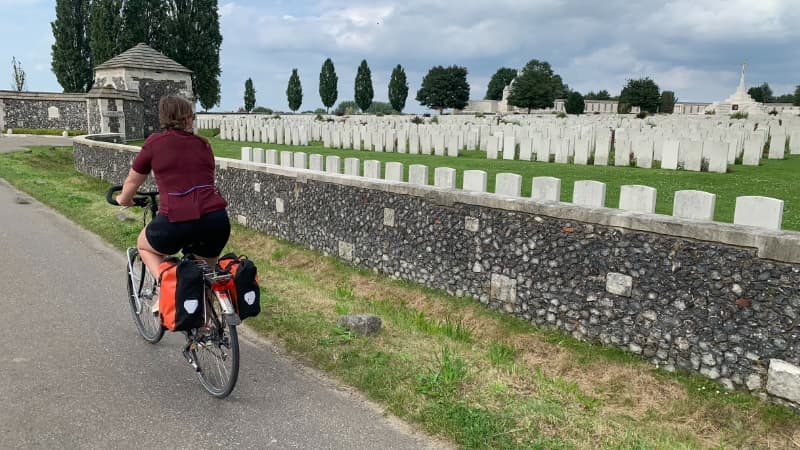Ypres
From Mesen, we descend through the rolling landscape of Heuvelland towards Ypres. Here and there, in the midst of the fields, there is a small cemetery or a green pool formed in a bomb crater.
A long row of remembrance trees accompanies us throughout this trip. The trees highlighted in red mark the German line, the blue the line of the Allies. At times, the two front lines are only a few metres apart.
After a while, we cycle into Ypres, a city steeped in blood and conflict during World War I. No fewer than four major battles were fought around the city. In the shadow of the Cloth Halls, we eat a toasted sandwich as the local market is winding down for the day. French, German and English voices can be heard everywhere - like echoes of lost comrades. The place is nicely bustling, with a mixture of tourists and local residents strolling over the market square. But things could have turned out differently.
In the aftermath of World War I, Ypres became sacred ground for the British. The ruins, standing as silent witnesses to the devastating conflict, were cherished as a modern Pompeii. The British authorities wanted these remains to be preserved, as a monument to the fallen and a warning for the future.
At first, the Belgian government was receptive to this extraordinary proposal. However, the citizens of Ypres had other ideas. Instead of clinging to the past, they wanted to build a new future. The city had to rise from its ruins, like a phoenix from the ashes.
And that is what happened. Ypres was rebuilt; its streets and squares given new life. The Cloth Halls, once destroyed by bombing, were restored and now serve as a belfry and museum. The Menin Gate, with its poignant listing of the names of missing soldiers, is a permanent place for remembrance and tribute.
Ypres Salient
We ride past the Menin Gate - wrapped up for renovation - and we leave the city. Every evening, the Last Post still sounds here beneath the vaulted arch. It is a ritual that keeps the memory of the war alive; a tribute to those who gave their lives for freedom and peace.
Once out of the walled city, we look for the Ypres Salient. It was a bulge or salient in the western front around the city of Ypres, a piece of Allied territory, protruding into German-occupied territory.
The commemorative and cemetery sites follow each other in quick succession. The region, steeped in history and stories, is dotted with UNESCO world heritage sites, revealing its treasures like an ancient library opening its books one by one. Describing everything would be too much for us.
One monument we found very beautiful and wanted to take a moment to remember is that of Brothers in Arms. A magnificent memorial for all the family members who fought side by side in the Great War.
John went to the front with his brother Jim. At the Battle of Polygon Wood on 26 September 1917, John was mortally wounded and died at the age of 27 in his brother’s arms. Chiselled into a bluestone flanking the monument are the lyrics of the song ‘Brothers in Arms’, by Mark Knopfler.
Later, we stop at Koen van Mechelen’ s monument in the Palingbeek nature reserve, at the strategic observation point Hill 60, we drink a beer at Hill 62, visit the cemetery in the Polygon wood, stop at the Passchendaele museum and finally cycle to the Tyne Cot Cemetery.
With nearly 12,000 graves, this is the largest Commonwealth cemetery in the world, the silent witness to the bloody Battle of Passchendaele. During this British offensive in 1917, nearly 600,000 casualties were recorded here in 100 days for a territorial gain of barely eight kilometres.
We pedal on to Poelkapelle where we lodge for the night at Het Oud Gemeentehuis, now a modern hotel with a great brasserie. With a hearty meal and lovely room, we can take a moment to reflect on this day full of intense impressions .


